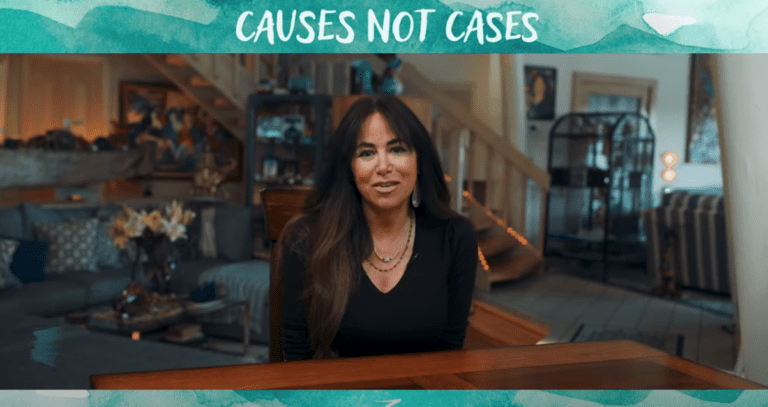[profileleft] [/profileleft]We as a society have come a long way with regards to bullying. What used to be seen and largely dismissed as a rite of passage for some is now seen as the serious problem that it is. Regardless of how far we’ve come with regards to bullying, we still have a long way to go. We are still learning about the causes and effects of bullying. As more studies are published, it seems that more troubling news is shared with the public. That seems to be the case with a recent study. It found that bullying rates among children with disabilities remains consistently high as they grow up. This despite the fact that there is a lower trajectory in bullying rates for children who are not challenged in some way.
[/profileleft]We as a society have come a long way with regards to bullying. What used to be seen and largely dismissed as a rite of passage for some is now seen as the serious problem that it is. Regardless of how far we’ve come with regards to bullying, we still have a long way to go. We are still learning about the causes and effects of bullying. As more studies are published, it seems that more troubling news is shared with the public. That seems to be the case with a recent study. It found that bullying rates among children with disabilities remains consistently high as they grow up. This despite the fact that there is a lower trajectory in bullying rates for children who are not challenged in some way.
About the Bullying Rates of Children with Disabilities Study
Researchers from the University of Missouri and the University of Florida reviewed several different data points in formulating conclusions regarding bullying rates for different students. Those interested in reading the study in its entirety can find it here. Specifically, the researchers reviewed surveys from 6,531 randomly chosen students between 3rd and 12th grade. The students completed the surveys every year between 2011 and 2013. They attended schools in a large New England school district. 50 percent of the students were male and 50 percent were female, and 16 percent of the students received special education services.
The researchers found the following:
- Bullying rates for all students peaked in 3rd grade.
- Those bullying rates fell drastically in middle school.
- Bullying raters rose again during high school.
The trend line, when comparing students with disabilities to those without, was largely similar. However, the bullying rates for students with disabilities were consistently higher than those without disabilities. This indicates that students with disabilities are the targets of bullying more often than those without them. The data also indicated that students with disabilities were involved with bullying others more often than their counterparts. As a result, the researchers argued that schools needed to review their approach to bullying and bullying prevention.
Why Children Bully
The study discussed above clearly points out a troubling trend regarding students with disabilities and bullying rates. Looking deeper into the issue, one may wonder why children engage in bullying in the first place. There are several reasons why children bully others, according to experts. A few of those reasons include:
- Learned behavior – One of the most common reasons that children engage in bullying is because they learn it at home. Some bullies have older siblings who may have been bullied and therefore bully their younger siblings. Some have parents who are aggressive and ‘teach’ bullying by example.
- Personality – Some children are inherently aggressive and in some cases impulsive. This nature can lead to bullying behavior. These personality traits can also be difficult to overcome and manage properly going forward.
- Response to environment – Some children grow up in difficult environments. That doesn’t mean that an older sibling or a parent is a bully, but rather their home lives are difficult for one reason or another. This can lead to a ‘lashing out’ against the world that can manifest itself in the form of bullying.
- Internal conflicts – Many bullies who have answered questions over the years have stated that they engage in this behavior because it makes them feel good or powerful. This response indicates that some bullies feel inferior in some sense and act out on that in this manner.
When it comes to why students with disabilities are bullied more than others, the answer appears to be that bullies naturally look for some type of perceived weakness in their targets. This ‘weakness’ often presents itself simply as something that’s different about one child when compared to the others in a certain setting.
Bullying Statistics
While our knowledge with regards to bullying may be relatively new, surveys over time indicate that children in particular always seemed to know what bullying was. According to Child Trends, a nonprofit organization dedicated to improving the lives of young people, bullying rates have remained largely consistent in recent years. Between 2011 and 2014, for instance, there was very little change in the bullying rates with regards to physical intimidation, relational aggression and cyberbullying. Those interested in seeing the full breakdown can find it here.
In an overall sense, bullying rates appear to remain high. According to data provided by Stomp Out Bullying:
- 25 percent of teens are bullied.
- 8 percent of students stay home from school on any given day due to fear of bullying.
- 282,000 children are attacked in secondary schools every month.
- Every 7 minutes, someone is bullied on a playground somewhere in the United States.
- No one intervenes in playground bullying 85 percent of the time.
Bullying and Students with Disabilities
As discussed above, a prominent source of bullying is in the home. Parents of children who go to school with those who have disabilities need to engage their children so that they understand how to handle such a situation. Specifically, parents need to help their children understand that students with any type of disability need to be treated with the same level of kindness, courtesy and respect as anyone else, as they do not deserve any less. This message can be crafted not only verbally but also by example. If you suspect your child is engaging in the bullying of a student with a disability or anyone else, you need to step in as quickly as possible.
How Children’s Rights Lawyers Can Help
Parents of children who are being bullied also need to take immediate action to protect those children. Most often, parents will try to work out a resolution with the school if the bullying is occurring there. Unfortunately, not all parents achieve results and not all bullying situations are stopped. If they were, the bullying rates would not remain so high across the country. If you find yourself in a difficult situation such as this one, you need to seek the help of children’s rights lawyers who dedicate their lives to protecting the rights of young people. Contact Gomez Trial Attorneys as soon as possible to schedule a free initial consultation.







